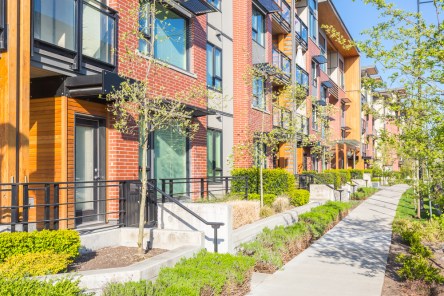Homeowner associations are experiencing a period of rapid change. These changes influence everything from how parties communicate to the appearance of the community. Explore three HOA trends for 2018-2019. Revisiting Short-Term Rental Rules Short-term rentals are an increasingly hot topic, particularly in popular tourist destinations and bustling metros. Many HOAs are tightening up short-term rental restrictions due to local government policy. Complaints from neighboring owners over safety, noise, and cleanliness have also raised concerns At the other end of the spectrum, some HOAs are finding ways to amend bylaws, making it easier for owners to rent out their units. This is rare, occurring only when the majority of owners value the economic potential of short-term rentals. HOAs may also find themselves revisiting rules about the community’s appearance. Regulations on political signage, flags, and other exterior décor have surfaced during owners’ meetings throughout the country and will likely continue. Increasing Demand for Certified Property Managers The demand for licensed property managers has surged in recent years. Community association managers (CAMs) remove the burden of fee collection while dedicating time and resources to owner and prospect care. Residents appreciate the professional services. Managers benefit from delegating tasks and potentially higher resident satisfaction. In most states, CAMs do not need a license. The lack of consistency and regulation has managers seeking CAMs with certifications in an effort to ensure quality Organizations such as the Community Associations Institute (CAI), Institute of Real Estate Management (IREM) and National Associated Builders and Owners (NABO) have witnessed increased enrollment. As these graduates enter the workforce, managers will have a larger body of certified CAMs from which to choose. Growing Prominence of Software Solutions Owners and manager both are discovering the benefits of condo-specific software that expedites documentation and billing processes.These solutions...
Help Wanted
Addressing An Aging Workforce
Born between 1981 and 1998, Millennials currently make up a third of the US workforce, but those numbers will need to rise exponentially in order to meet demand. According to the United Nations, the world’s advanced economies are experiencing a rapid decline in working-age population. The UN projects the available workforce to decrease by 5% within the next three years. That decrease is due primarily to aging of the current labor force, which creates an additional burden for country’s with wage-based entitlement programs like social security. As the number of recipients for these programs increase, the workforce contributions struggle to bridge the gap. In 1945, the ratio of workers to retirees was 41.9 to one. By 2010, that number had dropped to 2.9, with the number expected to drop to 2-to-1 by 2030. Ebbs and Flows As the Baby Boomer juggernaut moved from childhood to young adulthood, lower birthrates followed in their shadow. For years, there’s been growing concern over what would happen once the boomer generation hit retirement. The smaller Gen X demographic averaged a mere 3.4 million births per year – or 65 million total – not enough to supplement the 76 million boomers born between 1946 and 1964. Now it appears the tides are shifting. Sometime in April of last year, the U.S. population reached a significant milestone. For the first time in over fifty years, Baby Boomers no longer claimed the biggest portion of the country’s population. Hitting a high of 75.4 million, Millennials edged out the estimated 74.9 boomers to seize the crown. The Millennial population is expected to peak at 81.1 million by 2036 while the Boomers will shrink to 16.6 million by 2050. Shrinking Workforce With 83 million potential workers, the Millennials appear to be just what...


